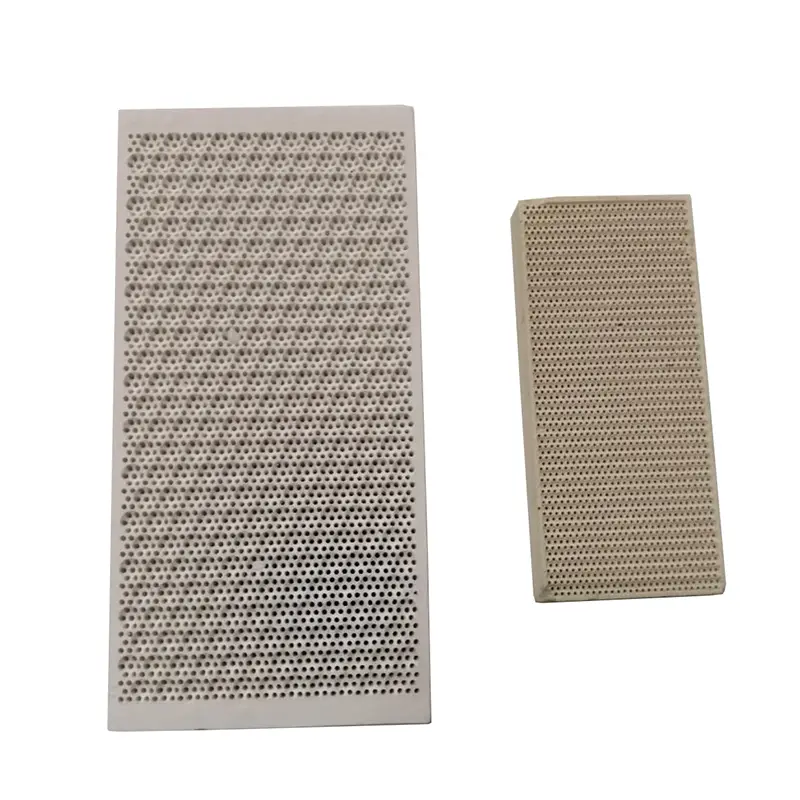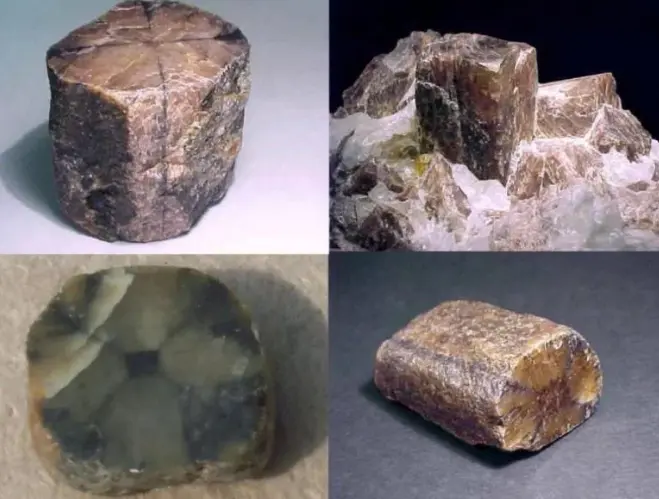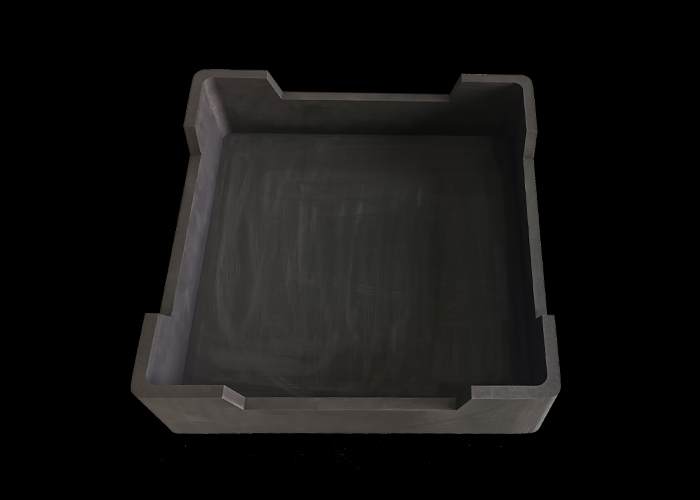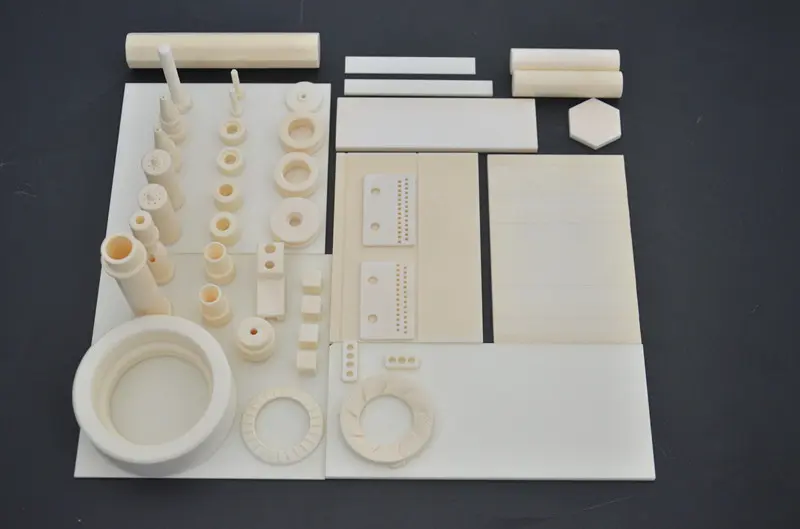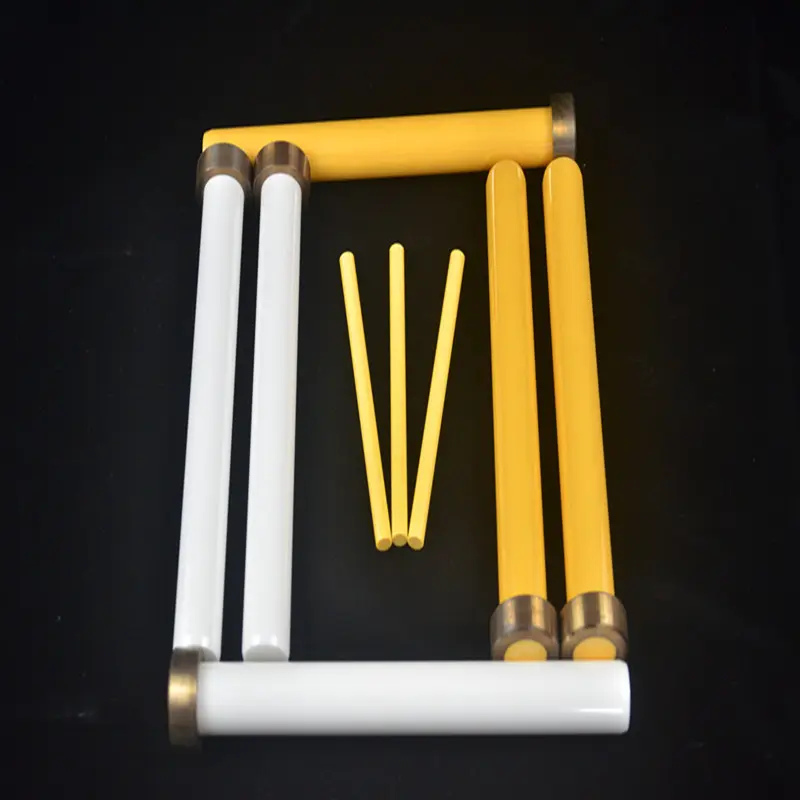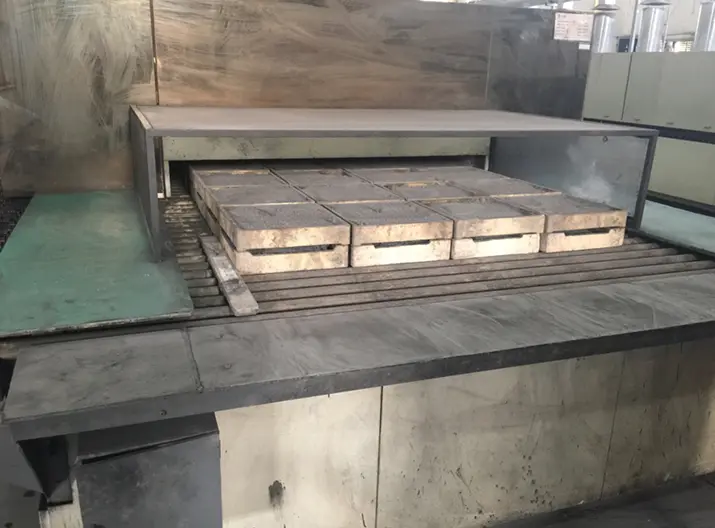Ceramic Materials in New Energy Vehicles: Key Applications and Technological
1. Power Electronics and Thermal Management
Ceramic substrates and components are pivotal in power electronics, particularly for high-voltage systems. Silicon nitride (Si₃N₄) and aluminum nitride (AlN) ceramic substrates are widely used in insulated gate bipolar transistor (IGBT) modules and silicon carbide (SiC) MOSFETs. These substrates provide exceptional thermal conductivity (e.g., 90 W/(m·K) for Si₃N₄ vs. 24 W/(m·K) for Al₂O₃), enabling efficient heat dissipation in high-power density environments. For instance, Si₃N₄ substrates reduce thermal resistance by 40% compared to traditional materials, allowing compact designs for 800V platforms1710.
A groundbreaking advancement in thermal management is the use of ultra-thin diamond films developed by the Fraunhofer Institute. These films, just 1 micron thick, combine high thermal conductivity (2,200 W/(m·K)) and electrical insulation, reducing thermal load by tenfold. This innovation could quintuple EV charging speeds by optimizing heat dissipation in inverters and transformers.
2. Battery Systems
Ceramics play a dual role in enhancing battery safety and performance. Ceramic-coated separators, such as those using α-alumina or boehmite, improve thermal stability in lithium-ion batteries. Traditional polyolefin separators melt at 135–165°C, risking thermal runaway, while ceramic coatings raise the withstand temperature to 500°C, delaying thermal runaway by 18 minutes in nail penetration tests.
In solid-state batteries, chloride-based solid electrolytes (e.g., LiAlCl₄) are emerging as non-sintered alternatives. These materials achieve ionic conductivity of 2.1 × 10⁻⁵ S/cm at room temperature, outperforming oxide-based electrolytes like LLZT. Their cold-press fabrication avoids high-temperature sintering, reducing interface defects and enabling scalable production.
3. Electric Drivetrain Components
Ceramic bearings, particularly silicon nitride (Si₃N₄) hybrid bearings, are replacing steel in high-speed EV motors. With 60% lower weight, threefold higher hardness (2,800 HV), and superior insulation, they minimize electrical corrosion and extend lifespan to 500,000 km, compared to 150,000 km for steel bearings. Tesla and Audi already integrate these bearings to enhance motor efficiency by 2.3%1410.
Ceramic relays are critical for high-voltage DC systems (60–1,500 V). By using vacuum-sealed ceramic-metal interfaces, they eliminate arcing—a major cause of vehicle fires—ensuring safer power distribution.
4. Lightweight Structural and Braking Systems
Carbon-ceramic (C/C-SiC) brake discs are revolutionizing braking performance. Combining carbon fiber and silicon carbide, these discs reduce unsprung mass by 20 kg per pair, extending range by ~50 km. Their high thermal stability (up to 1,500°C) and wear resistance also improve braking responsiveness and durability.
For structural components, ceramic-aluminum (Al₂O₃-Al) composites offer high stiffness, fatigue resistance, and 30–50% weight reduction compared to steel or aluminum. Applications include chassis parts and battery enclosures, contributing to overall vehicle lightweighting.
5. Optical and Sensor Systems
Transparent ceramics, such as yttria-stabilized zirconia (YSZ), are replacing glass in LiDAR and camera lenses. Their high hardness, thermal resistance (>1,500°C), and adjustable refractive index make them ideal for autonomous driving systems operating in extreme conditions.
6. Future Prospects and Challenges
While ceramics offer transformative benefits, challenges remain in cost-effective manufacturing and sintering. Innovations like HIP (hot isostatic pressing) sintering and sol-gel synthesis are addressing these issues, enabling mass production of components like SiC bearings and proton-exchange membranes for fuel cells.
In conclusion, ceramics are indispensable in advancing NEVs, from enhancing battery safety to enabling high-efficiency drivetrains. As sintering technologies evolve and production scales, ceramics will further solidify their role as a pillar of the automotive industry's s sustainable future.


